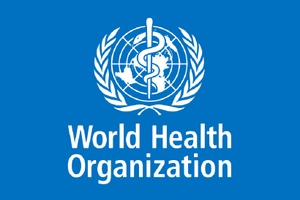WHO updates policy for the use of TB LAM test
The World Health Organization now recommends more broader use of urinary LAM assays for diagnosis of TB in people living with HIV.
4 November 2019 | Geneva -The World Health Organization
(WHO) has updated its guidance for the use of lateral flow urine
lipoarabinomannan assay (LAM) in the diagnosis of tuberculosis
(TB). Following
new evidence, WHO now recommends more broader use of urinary LAM assays for
diagnosis of TB in people living with HIV.
“As we accelerate efforts to reach 40 million people with
TB care by 2022 as per the UN high-level meeting political
declaration, we need to have more sensitive tools to diagnose TB
in all patients, including in those with smear-negative TB,
children and people living with HIV”, said Dr Tereza
Kasaeva, Director of the WHO Global TB Programme.
Tests based on the detection of mycobacterial LAM antigen in
urine have emerged as potential point-of-care tests for TB. The
WHO Global TB Programme recommended the use of LF-LAM for the
first time in 2015. Urinary LAM assays have shown greater
sensitivity (when used for the diagnosis of TB in people living
with HIV. The sensitivity increases significantly in patients
with lower CD4 cell counts. Following the new evidence, WHO is
now recommending LF-LAM use to assist in diagnosis in a broader
group of people, both in inpatient and outpatient settings.
In inpatient settings, WHO strongly recommends
using LF-LAM to assist in the diagnosis of active TB in
HIV-positive adults, adolescents and children with signs and
symptoms of TB (pulmonary and/or extrapulmonary), or with
advanced HIV disease (1) or who are seriously ill
(2) or else irrespective of signs and symptoms of TB and
with a CD4 cell count of less than 200
cells/mm3.
In outpatient settings, WHO suggests using
LF-LAM to assist in the diagnosis of active TB in HIV-positive
adults, adolescents and children: with signs and symptoms of TB
(pulmonary and/or extrapulmonary) or seriously ill; or else
irrespective of signs and symptoms of TB and with a CD4 cell
count of less than 100 cells/mm3.
In outpatient settings, WHO recommends
against using LF-LAM to assist in the diagnosis
of active TB in HIV-positive adults, adolescents and children
without assessing TB symptoms; or without TB symptoms and
unknown CD4 cell count; or else without TB symptoms and CD4 cell
count greater than or equal to 100
cells/mm3.
The WHO End TB Strategy prioritizes early diagnosis of TB. This
includes cases of smear-negative disease, which are often
associated with HIV coinfection and young age. An estimated 9%
(0.9 million) of the 10 million people who developed TB
worldwide in 2018 were among people living with HIV. The vast
majority of them (71%) are in the WHO African Region.
Notes:
(1) For adults, adolescents, and children aged 5 years or more,
“advanced HIV disease” is defined as a CD4 cell
count of less than 200 cells/mm3 or a WHO clinical
stage 3 or 4 event at presentation for care. All children with
HIV aged under 5 years should be considered as having advanced
disease at presentation.
(2) “Seriously ill” is defined based on four danger
signs: respiratory rate of more than 30/minute, temperature of
more than 39 °C, heart rate of more than 120/minute and
unable to walk unaided.
Read the policy update here.
Source:
WHO


